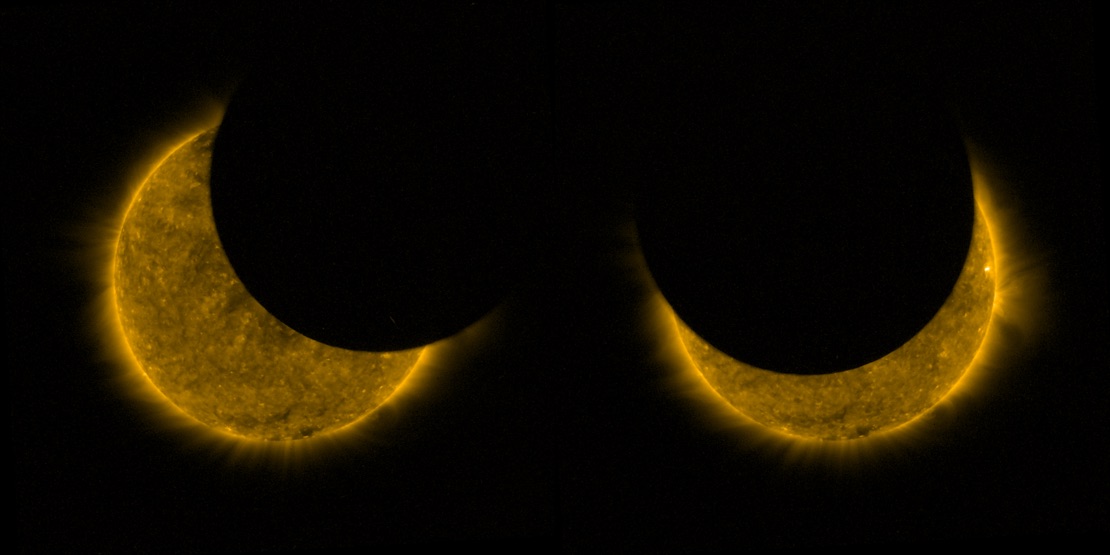Satellite Sees Double When Snapping Solar Eclipse Pictures from Space
A new image of a solar eclipse will have you seeing double. Views from the sun-watching Proba-2 satellite show the moon passing in front of the sun in two pictures snapped during a partial solar eclipse on Saturday (Aug. 11). The satellite flew through the moon's shadow twice during the eclipse.
Solar eclipses happen when the moon moves between Earth and the sun, from the Earth's perspective. A happy cosmic coincidence means the moon is just about the same apparent size in the sky as our sun, so sometimes the moon can block the sun completely. Like last year, when atotal solar eclipse passed across the continental U.S.
This time around, the eclipse was a partial one, and a different region of the world got to witness it. The eclipse path included most of Asia, far northern Europe, Iceland, Greenland and a bit of northern and eastern Canada. The event was the third and final solar eclipse for 2018, and astrophotographers captured photos all along the eclipse's path.
While the eclipse wowed observers on the ground, Proba-2 got to witness the event from space. The European Space Agency satellite orbits Earth a little more than 14 times per day, and its viewing angle changes with each orbit. So the satellite flew in and out of the moon's shadow twice while the eclipse was happening.
The images were captured at 4:40 a.m. EDT (0840 GMT) and 6:32 a.m. EDT (1032 GMT) using the satellite's camera, which is called SWAP (Sun Watcher Using Active Pixel System Detector and Image Processing). The camera observes the corona — the tenuous and ultra-hot outer atmosphere of the sun — in extreme ultraviolet wavelengths.
Coincidentally, NASA sent a spacecraft to the sun that same weekend. The Parker Solar Probe launched successfully on Sunday (Aug. 12) from Cape Canaveral Air Force Station in Florida. Parker is designed to fly closer to the sun than ever before, at a minimum distance of 4 million miles (about 6.5 million kilometers). That's nine times closer than planet Mercury's orbit around the sun.
Follow us @Spacedotcom, Facebook and Google+. Original article on Space.com.
Breaking space news, the latest updates on rocket launches, skywatching events and more!

Elizabeth Howell (she/her), Ph.D., was a staff writer in the spaceflight channel between 2022 and 2024 specializing in Canadian space news. She was contributing writer for Space.com for 10 years from 2012 to 2024. Elizabeth's reporting includes multiple exclusives with the White House, leading world coverage about a lost-and-found space tomato on the International Space Station, witnessing five human spaceflight launches on two continents, flying parabolic, working inside a spacesuit, and participating in a simulated Mars mission. Her latest book, "Why Am I Taller?" (ECW Press, 2022) is co-written with astronaut Dave Williams.

